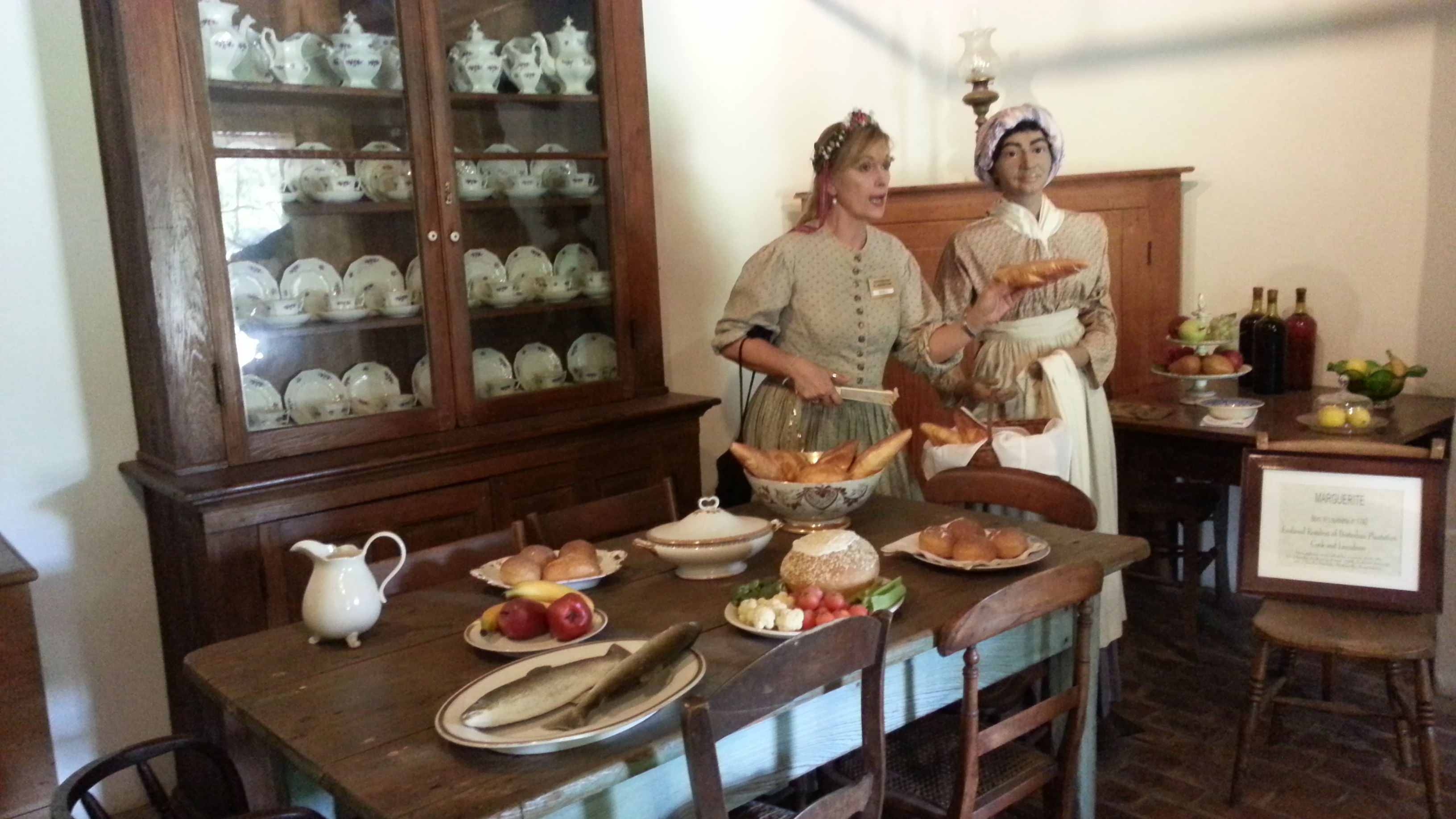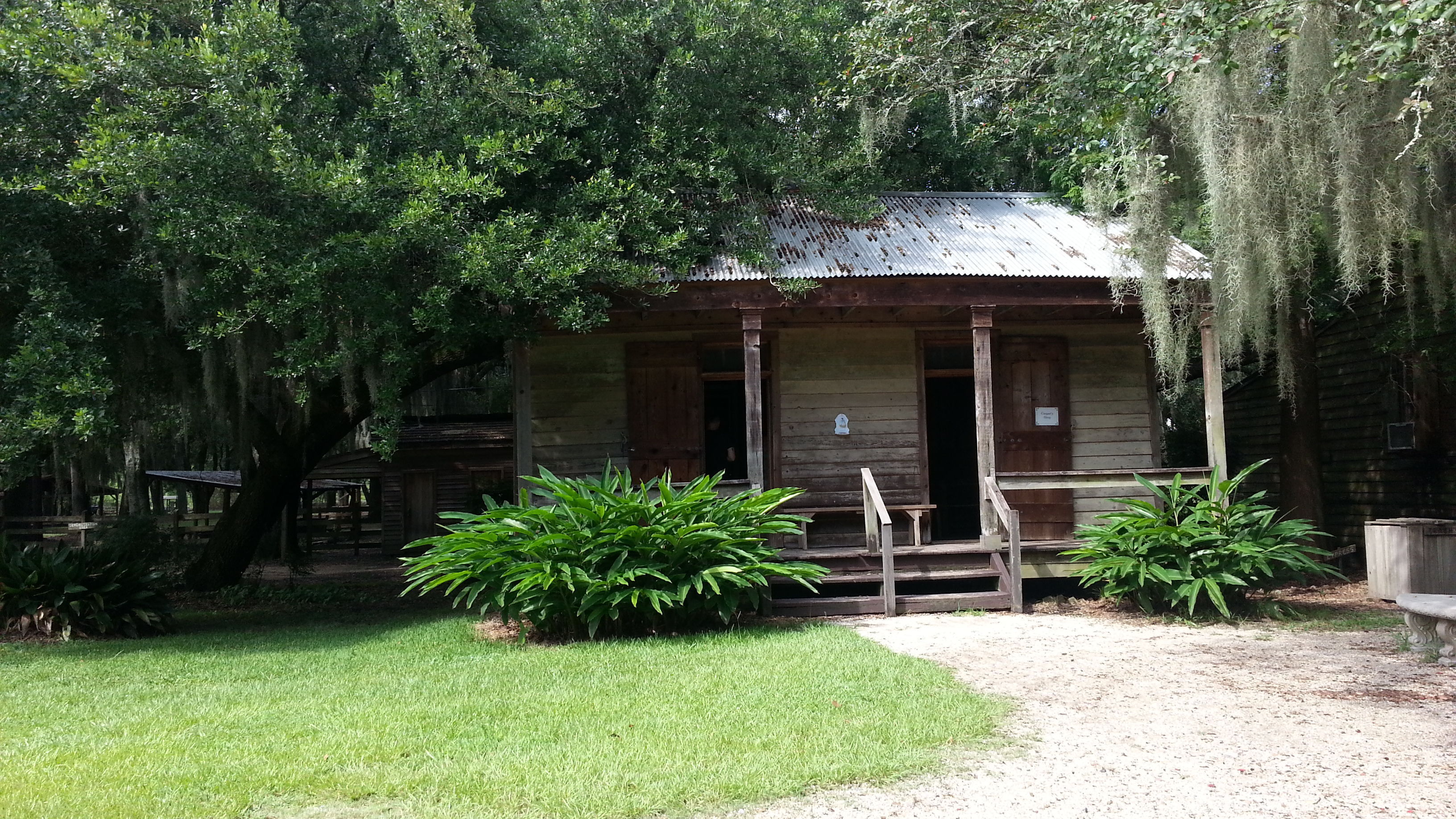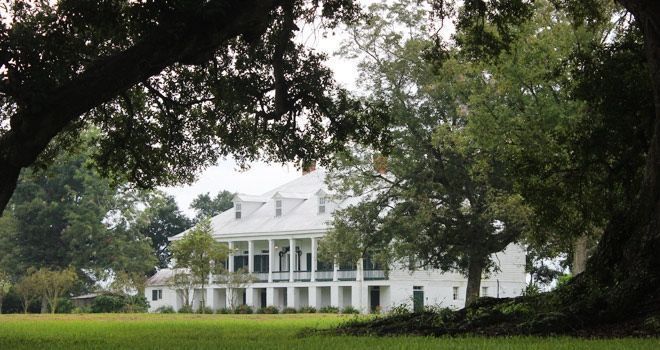The glamorous life of old on display in New Orleans’ Garden District is far surpassed by the many riverfront antebellum mansions and plantations lining the Great River Road. Be sure to allow half a day to tour one, show the family the agricultural heart of the state, and discover how the lives of plantation owners differed from that of their slaves.
Preparing for your Plantation Visit
If you’re visiting New Orleans and haven’t done so, wander into the main museum of the Historic New Orleans Collection in the French Quarter, where you can study wonderful old maps and documents that chronicle the region’s changing fortunes between French, Spanish and American masters up till the Louisiana Purchase. Adults will find it a helpful background on plantation tours.
Drive or hop a streetcar along St. Charles Avenue for self-guided look at the picturesque Garden District. We loved rumbling past hundreds of stunning homes, alleys of enormous Live Oak trees draped in Spanish moss, and manicured gardens tucked behind walls of pink and white crepe myrtle. The 13-mile-long St. Charles Avenue trolley provides a memorable and bargain tour of the district and its manor houses.
What makes the plantations themselves different is their size. Large parcels along the Mississippi River stretching up to Lake Pontchartrain were planted with cotton, sugar cane and other crops vital to the region’s economy. How the plantation owners lived and how their homes are used today should be the deciding factors when you pick one or two to visit. Get the kids involved in the choice and they’ll be much better companions on the tour.
Here are some of our favorites, though newly restored plantations may be open at your visit.
Evergreen Sugar Plantation in Vacherie
Eager to see the Mississippi of Huck Finn, we drove about one-and-a-half-hours’ south to River Road in Vacherie to visit the plantations. At Evergreen, we joined a fascinating 90-minute tour of what was originally a sugar plantation’s Great House. This successful immigrant German farm family learned from the local Creoles how to build one story above ground to avoid flooding, create high-ceilinged rooms to vent the heat, and surround their home with deep covered porches for shade.
The Evergeen you see today was rebuilt in the classic Greek Revival style by their heirs during the 1830’s (about the time slaves were brought in to help with the land), so a visit, like at many plantations, was more an insight into the region’s social history than its architecture. It claims to be the most intact plantation complex in the South with 37 buildings on the National Register of Historic Places, including 22 slave cabins and is still being farmed today.
The kids loved the Garconnieres, adjacent cottages that were reserved for the boys once they became teens, and could no longer sleep 10 to a bed with sisters. Evergreen’s slave quarters and other out buildings, intact and restored, are also well worthwhile. If you want to do a two-for-one, you can join their overland Evergreen Swamp Tour, and see the wildlife on their nearly 4,000 acres with a Jeep and small boat tour.
Oak Alley, Hollywood Plantation on the Mississippi
Nearby is Oak Alley, a much haughtier version of plantation life. It was originally scoffed at by locals as belonging to “Americans,” because those who settled after the Louisiana Purchase paid little regard to the native Creole building styles.
Oak Alley, often photographed for the allee of 28 majestic Live Oak trees that prompted the building of a brick mansion at their head, has its own tale of woe and fallen fortunes. Children will appreciate the costumed tour guides and their anecdotes of that era. Teens will like hearing that Tom Cruise and Brad Pitt have both toured and slept at the estate (in Interview With The Vampire.) Parents will enjoy hearing that many other things, from Hush, Hush, Sweet Charlotte to Primary Colors, were filmed there, too.
In keeping with our quest for Southern culture, we stayed to dine on the plantation’s Oyster Po’Boy sandwiches, thick soft buns filled with fried breaded oysters, sliced tomatoes and heaps of sweet mayonnaise. If you’re really into the days of old, you can rent one of five, century-old cottages on the property. Conversely, if you’re pressed for time, join one of the many escorted tours that depart from New Orleans and will give you an overview of the plantation economy during its heyday.
Laura Plantation, Where Slave Quarters Tell the Story
At the Laura Plantation, where a 2004 fire gutted the main house, tours are now focused on the plantation’s fascinating slave quarters and the history of four generations of women, both free and enslaved, who lived there.
It will interest many Northerners to know that often, after Emancipation, plantation slaves stayed on to farm their ancestral homes as paid laborers. Of course, times were hard for many and the Laura’s sensitive guides give a very moving account of their daily lives.
Destrehan Plantation, Founded by French Nobility
In 1787, the colony’s treasurer to the King of France, Jean Baptiste Destrehan, built the largest sugar plantation in Saint Mary’s Parish, on an eight-mile plot between the Mississippi and the Lake which took his name. Although the original Destrehan has gone through periods of neglect and many changes — including ownership by a freed slave — the fully restored Greek Revival house seen today is made interesting by its wonderful costumed guides. We learned how the owners’ children would eat with the house cook and slaves, and that everyone worked together to make the harvest a success.
In addition to the “hands-off” one-hour house tour, kids will most appreciate the rambling grounds, enormous Live Oaks draped in Spanish moss, and daily demonstrations, ranging from traditional African-American herbal medicine to woodworking or indigo dyeing. It’s one of the closest properties to New Orleans, so do let your teens know that several scenes from 12 Years A Slave were filmed at Destrehan.
Several Families Worked to Restore St. Joseph Plantation
The Saint Joseph Plantation was built by Louisiana Creoles in 1830, and has been associated with several important local families over the years. Near Oak Alley in Vacherie, St. James Parish, it was a 1,000-acre sugar plantation whose main house was used by the plantation’s French doctor. That house passed through the hands of Josephine Ferry, then after the Civil War, was bought by Joseph Waguespack, whose descendants have restored it very authentically.
More modest than others, St. Joseph’s focuses on the sugar cane industry and the daily lives of slaves, as seen through its slave cabins and remaining out buildings. Look out for the “Mourning Tours” in which they have live characters portraying some of the people that lived at St. Joseph and their mourning customs.
Trip Planning Details for a Plantation Tour
You can dive into Louisiana’s plantation culture for a few hours or a long weekend, depending on your family’s appetite. When planning your excursion, be sure to double check the websites as most homes are closed at least one day of the week. Some have reduced hours in the summer; many have holiday celebrations with festive decor during winter.
For more information on the variety of plantations open for tours, and rural accommodations near to them, visit Louisiana Travel Plantations Louisiana Travel’s plantation resource.
Dear Reader: This page may contain affiliate links which may earn a commission if you click through and make a purchase. Our independent journalism is not influenced by any advertiser or commercial initiative unless it is clearly marked as sponsored content. As travel products change, please be sure to reconfirm all details and stay up to date with current events to ensure a safe and successful trip.


